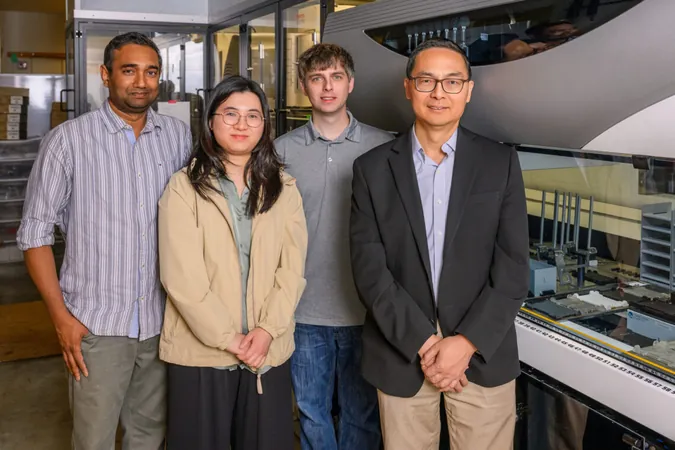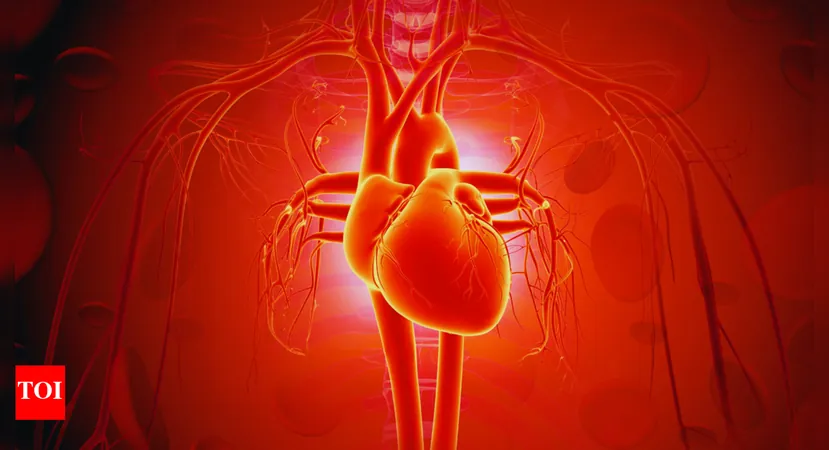
Revolutionizing Enzyme Production: The Future is Here with AI and Robotics!
2025-07-01
Author: Jacob
A Breakthrough in Enzyme Engineering!
In a groundbreaking development hailing from the University of Illinois Urbana-Champaign, researchers are transforming the world of enzyme engineering by merging artificial intelligence (AI) with cutting-edge robotics and synthetic biology. This innovative approach not only enhances the performance of crucial industrial enzymes but also streamlines the process for developing countless others!
Meet the Visionaries Behind the Innovation
Led by the brilliant Huimin Zhao, a professor in chemical and biomolecular engineering, this dynamic team shared their exciting results in the esteemed journal Nature Communications. Zhao emphasizes the significant role enzymes play across diverse sectors such as energy production, pharmaceuticals, and even everyday products like laundry detergent. Despite their potential, enzymes have faced challenges that limit their widespread application—until now!
Unlocking the Enzyme Puzzle
Enzymes, the workhorses of biological processes, often struggle with efficiency and specificity in complex environments. The quest to enhance enzyme function has been daunting, primarily due to the vast complexities involved in determining the optimal genetic mutations needed for improvement.
Zhao points out the difficulty of pinpointing the right changes: "It’s often not just one mutation but a flurry of synergistic alterations that can unlock potential." Their cutting-edge model seamlessly integrates AI and automated synthetic biology to tackle these challenges head-on.
From Theory to Practice: AI Takes the Wheel
Advancements from Zhao's previous work established an AI model that predicts enzyme functionality based on sequence data. The latest research pushes this boundary even further—enabling the AI to suggest precise modifications to known proteins that can significantly boost their performance.
Nilmani Singh, a co-first author on the research paper, states, "The variations possible in a standard enzyme dwarf the number of atoms in the universe! That’s where our AI comes into play, helping us filter through this labyrinth to create a refined list of actionable variant combinations.”
The Game-Changing iBioFoundry
To transform AI insights into reality, the team paired their models with the iBioFoundry, a state-of-the-art facility at the University of Illinois. This center, overseen by Zhao, specializes in the rapid engineering and testing of biological systems, thanks to funding from the National Science Foundation.
The innovative process starts with the AI suggesting enzyme performance enhancements. Following this, advanced protein-building machines in the iBioFoundry create the enzymes, which undergo swift testing to evaluate their functionality. Crucially, feedback from these tests is looped back into the AI system, catalyzing refined designs for future iterations.
Towards a Self-Driving Lab
Stephan Lane, the iBioFoundry manager and co-first author, envisions the near future: "We’re edging closer to a self-driving lab—a facility that autonomously designs, synthesizes, and tests proteins based on real-time AI-driven feedback!" This blend of AI and robotics heralds a new era in scientific exploration.
Stellar Results and an Exciting Future
The tangible outcomes of this innovative synergy are astounding: the team produced enzyme variants with spectacular improvements, including a feed enzyme that boosted activity by 26 times and a catalyst with 16 times greater efficiency and a staggering 90 times preference for its target molecules.
Zhao notes, "While we focused on two enzymes, our approach is broadly applicable. With just a protein sequence and an assay, the possibilities are limitless—I’m eager to broaden the scope of our work!”
Simplifying Science for All
Looking ahead, the team aims to enhance their AI models and improve equipment for even quicker results, while a user-friendly interface allows researchers from various backgrounds to easily tap into this technology. As graduate student Tianhao Yu points out, "Our goal is to democratize this tool so anyone can articulate their needs in plain English and watch their ideas come to life!"
Support from the National Science Foundation and the U.S. Department of Energy has been instrumental in making this groundbreaking research possible. The future of enzyme innovation is bright, and this team is leading the charge!









 Brasil (PT)
Brasil (PT)
 Canada (EN)
Canada (EN)
 Chile (ES)
Chile (ES)
 Česko (CS)
Česko (CS)
 대한민국 (KO)
대한민국 (KO)
 España (ES)
España (ES)
 France (FR)
France (FR)
 Hong Kong (EN)
Hong Kong (EN)
 Italia (IT)
Italia (IT)
 日本 (JA)
日本 (JA)
 Magyarország (HU)
Magyarország (HU)
 Norge (NO)
Norge (NO)
 Polska (PL)
Polska (PL)
 Schweiz (DE)
Schweiz (DE)
 Singapore (EN)
Singapore (EN)
 Sverige (SV)
Sverige (SV)
 Suomi (FI)
Suomi (FI)
 Türkiye (TR)
Türkiye (TR)
 الإمارات العربية المتحدة (AR)
الإمارات العربية المتحدة (AR)